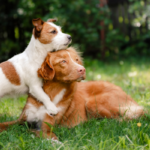Ear problems are common at this time of the year so if you’ve noticed anything out of the ordinary with your pet’s ears, it’s important we take a look.
The ear canal is its own mini environment and this can be disturbed by heat, moisture, allergies and foreign bodies (grass seeds are a major culprit).
A change in this mini environment allows bacteria and yeast to flourish resulting in a very unhappy ear canal and a miserable pet.
You should look out for:
- Discharge – often smelly and may be black, white or yellow in colour
- Hot and red ears
- Shaking of the head or a head tilt
- Rubbing ears along the floor or furniture (dogs love to rub on the back of the couch!)
- Itching behind the ears
- Flicking of the ears (mostly cats)
If your pet has a suspected ear problem, we will need to examine the canal with an otoscope. This allows us to rule out the presence of a foreign body and inspect the canal for signs of irritation and infection.
To identify if bacteria or yeast are present, a sample should be taken and stained with particular chemicals and examined under a microscope. This enables us to prescribe the correct medication for your pet and gives the ear the opportunity to heal as quickly as possible.
Really nasty ear infections and foreign bodies such as a grass seeds may require your pet to be sedated or undergo a general anaesthetic. This allows efficient flushing of the ear and safe removal of a foreign body.
If you think your pet has an ear problem you should arrange a check up with us ASAP. The longer you leave an ear infection, the more painful the ear becomes and the harder (and more expensive) it is to treat.






